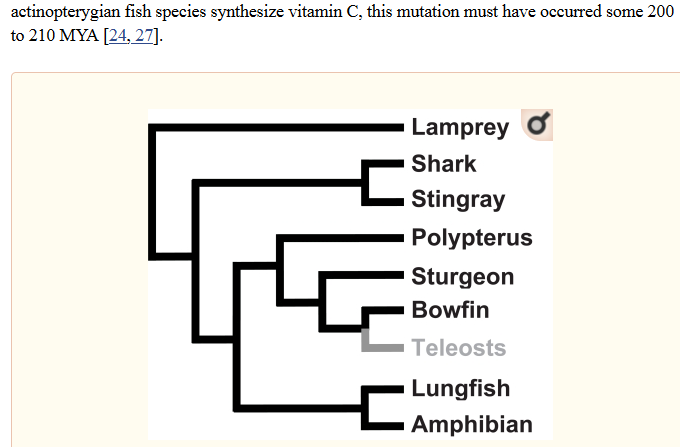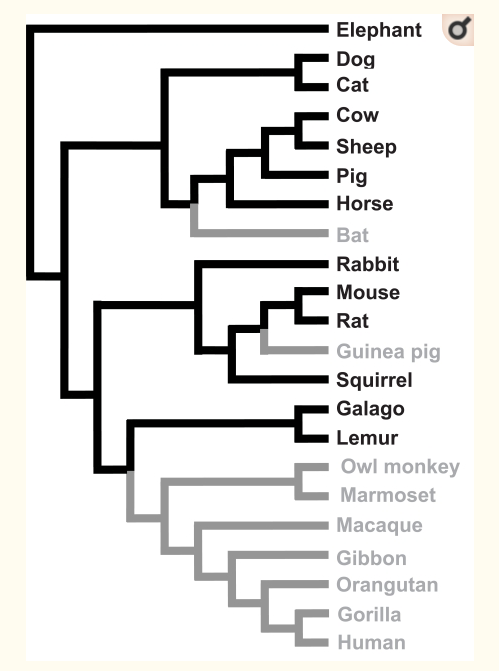buffy said:
I found this link while looking for something else. But it’s Quite Interesting if you want to waste a little time on the genomics of vitamin production. It’s not a particularly recent paper.
“The Genetics of Vitamin C Loss in Vertebrates”
https://www.ncbi.nlm.nih.gov/pmc/articles/PMC3145266/
> Very interesting
“most vertebrate species are able to synthesize this compound. Surprisingly, many species, such as teleost fishes, anthropoid primates, guinea pigs, as well as some bat and Passeriformes bird species, have lost the capacity to synthesize it”
That’s weird.
I note that Vitamin C production produces peroxide as a side product. A lot of organisms find peroxide toxic.


“the inactivation dates have been calculated to be about 61 MYA in anthropoid primates and 14 MYA in guinea pigs”

The following chart is for bats. Some but not all bats. OK, that’s weird, some microbats and some megabats can synthesise Vitamin C, but most can’t. “Reactivation is made possible by the fact that the sequence of these two GLO genes is very well conserved relative to that of other mammalian species”.

For passerine birds, th family tree of those that can and can’t synthesis Vitamin C have relationships that are best described as “messy”. With the paradise flycatchers (Terpsiphone) now included with the crows, the old world flycatchers (Muscicapidae) are the only big group of passerines that have all retained the ability to synthesis Vitamin C.



